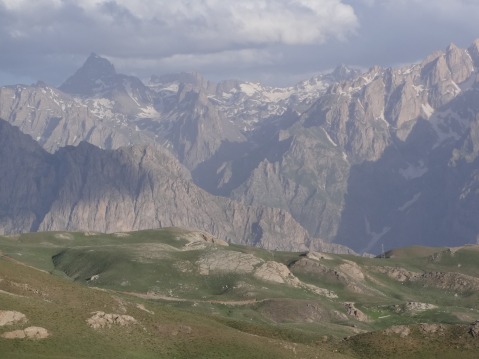Population: neglible
Other name: Qudshanis (Kurdish)
Once upon a time Koçanis, 22km from Hakkari, was apparently a flourishing and wealthy village. Now, though, only a couple of people still live here, and one of them is the village guard. This is despite the fact that on a bluff at the back of the village stands the strangely austere and self-effacing stone building that housed the Nestorian patriarchate of Hakkari from c.1662 until 1915 when the 13th and last office-holder was murdered in Iraq.
An English priest named William Ainger Wigram (1872-1953) left an account of Kochis in his The Cradle of Mankind: Life in Eastern Kurdistan which was published in 1922.
Backstory
In 1672 a group of Chaldean Catholics from Diyabakır settled on this mountain site and within 20 years had broken away from their own church to join the Nestorian faith instead. Almost unbelievably, their village became the ‘capital’ of the local Assyrian tribes who paid tribute to the Nestorian patriarch who then paid tax to the Ottoman government for a form of independence. In 1915 Mar Shimun XIX declared war on the Ottomans with the inevitable result that the village was emptied, the church destroyed.
The Church
The building is so plain that it’s not even entirely clear where the entrance was – the windows resemble arrow slits. A couple of roundels on the facade are all the decoration it was given. Inside, the ground has been dug up by treasure-seekers making it hard to see what’s what there either. The church was dedicated to Mar Shalita.
But if the church is ultimately disappointing the journey to reach it is certainly not provided you’re prepared for an unasphalted road that slowly disintegrates into a rutted track. All around the mountains soar in splendour above fields filled with wildflowers in spring. Huge herds of sheep and goats, and smaller ones of cattle pass by. Birds trill in the trees. My taxi driver swore that there were bears in the woods as well as many, many wild boars. 
Bazaar of Heraclides At one time there was a library in the complex at Koçaniş and in 1895 a 16th-century manuscript was found to contain a copy of a document written in 451 by Nestorius that appeared to clear him of heresy. The original manuscript was destroyed during the 1915 Seyfo although by then it had been translated into Suryani as the Bazaar of Heraclides.
Transport info
Without your own car you will need to negotiate with a taxi driver in Hakkari to bring you here and they will want to factor into the cost the poor state of the road (impassable in winter, I would say).
Driving you need to get directions to Yeni Mahalle from your hotel and then look for the road on the right to Konak – it’s not easy to find. Make sure you have water, something to eat and a mobile phone with you as well as a spare tyre – if you breakdown on the track it’s unlikely anyone will be passing by to help out.



